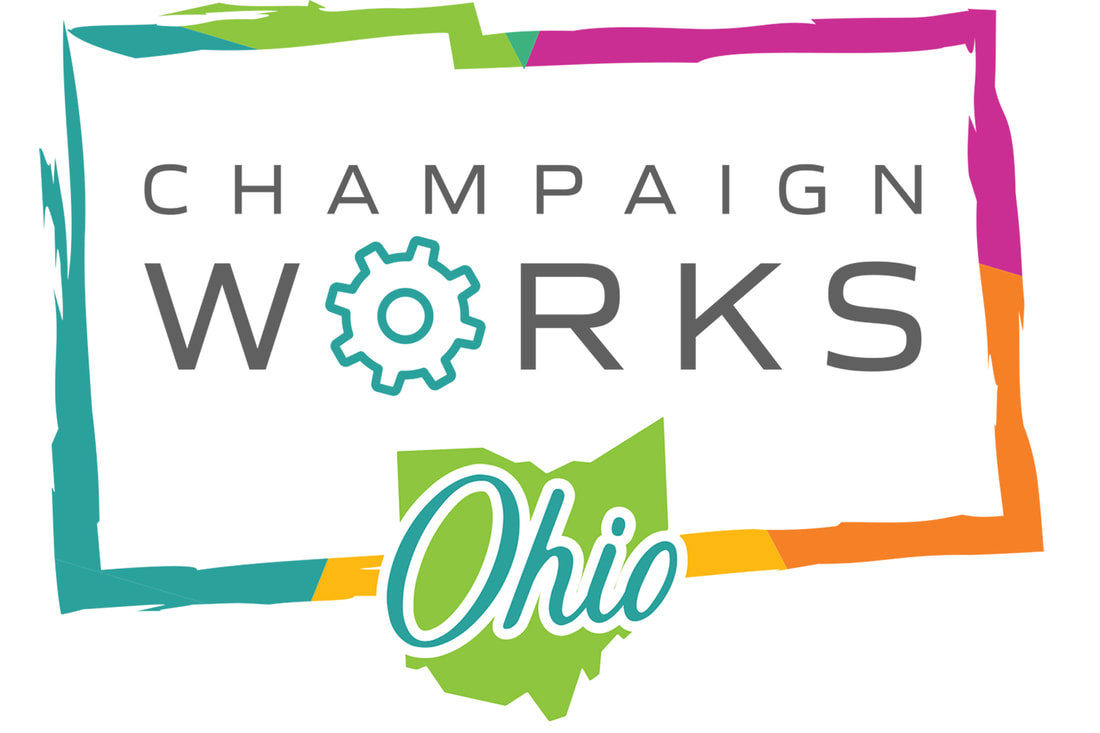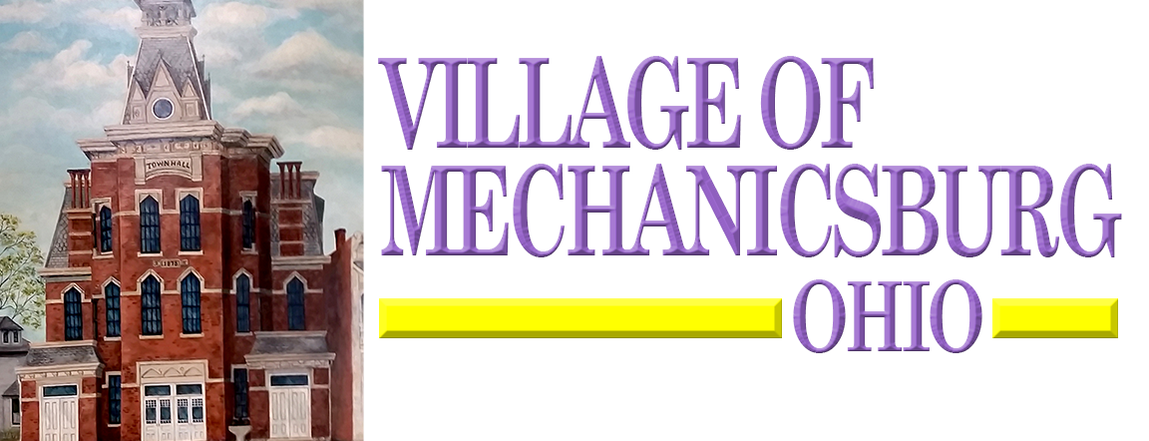First of Legacy Place Senior Living Apartments to Be Ready Mid to Late June; Tours Being Scheduled6/7/2021
Tours Available by Appointment
Seniors age 55+ who are interested in leasing a Legacy Place apartment can visit livelegacyplace.com to complete a pre-qualification questionnaire and to schedule a tour at Legacy North or South. Or they may contact the Legacy Place management team at 937-638-0211 or [email protected]. Meals-Herron said that her team has already assisted several seniors who completed the questionnaire. Tours will be scheduled from 2 to 4 p.m., by appointment, after June 10. To request a tour, click the Request to Tour button on the livelegacyplace.com home page. Legacy Place Amenities “The Legacy Place properties merge history and modern architecture to provide residents a comfortable, beautiful place to live and stay active,” Meals-Herron said. The one- and two-bedroom apartments are equipped with washers, dryers and kitchen appliances. Some incorporate features of the schools like chalkboards, bulletin boards and wall art. Legacy Place North amenities include a community room, computer stations and a library. Legacy Place South offers a fitness center, library, and a community room large enough to host special events, such as a senior prom, for residents of all three Legacy Place properties, Meals-Herron said. The South community room, formerly the school’s gym and stage, also includes the school’s projection room, which will be used for movie nights. Other features include a unit at Legacy Place North that residents can reserve for out-of-town guests. Both of the school properties will have outdoor grilling stations and are keeping much of the schools’ playground equipment. “That will be great for residents to go outside with their grandchildren.” In addition, residents can reserve the community rooms for family functions. Legacy Place Partners and Services Community partners have joined Legacy Place to help residents stay active in the community, Meals-Herron said. These include:
“We’re linking all of these organizations together to provide residents services and resources so they can stay active in the community,” Meals-Herron said. She adds, “This is an absolutely amazing project. I’m so excited. I can’t wait until our residents begin to move in.” “Legacy Place will enrich our community in many ways,” said Marcia Bailey, director of the Champaign Economic Partnership. “It will provide seniors comfortable, affordable living as it restores and gives new purpose to three historic buildings, helps make our community more attractive, increases the vitality of downtown Urbana, and strengthens our local economy.” And as seniors sell their homes and move into Legacy Place apartments, the project will help ease the shortage of available single-family homes, she added. “I’m so grateful for the public-private partnerships that have made Legacy Place possible,” she said. By: Jenna Lawson, WHIO
View video of the announcement on WHIO's website There were many points in the last five years that community partners thought ‘Legacy Place’ might never happen. It took time to capture nearly $13 million in funding sources, including historic tax credits – not to mention delays due to the pandemic. But on Thursday, partners announced the funds were released and they are able to move forward with the project. It’s possible construction could start within the next week. ‘Legacy Place’ transforms the Douglas Inn in downtown Urbana and two former elementary schools (North & South) into affordable senior housing. 51 units will be created for those 55 and older, with six of them being devoted to people with disabilities. “It’s just a real renaissance for Urbana,” Mayor Bill Bean told News Center 7′s Jenna Lawson. Duane Miller, with development company Flaherty & Collins and also president of F & C Legacy Place, said the project accomplishes two goals: turning three vacant properties into useful properties and filling the need for affordable senior housing in Urbana. “I love to jump into the skin of a community that’s looking for help and looking for opportunities to spur on their own development,” he said. The Douglas has been vacant since 2004 and has long been a large eyesore on the southwest corner of Monument Square. The building has somewhat deteriorated and was the target of multiple arson fires in 2019. The former owner of the property, John Doss, has done work to stabilize the structure. The elementary schools, despite being about 100 years old, are in solid shape, partners said. The timeline for the project will move quickly. Developers estimate about six months to complete both elementary schools and a little over a year to finish the Douglas. Partners are hopeful that the project will have a positive domino effect on other aspects of Urbana living including neighboring businesses and housing. “We may see some of those seniors who may move in here and now their single family homes are available for a new families to move in,” said director of the Champaign Economic Partnership, Marcia Bailey. Bailey added that this solution also preserves the history of all three buildings for the community to enjoy for decades to come. “Having these buildings standing as they are and being repurposed is a huge win for our community,” she said. Other partners in the project include the City of Urbana, Urbana City Schools and Resident Supports and Services, Inc., which provides housing for seniors and adults with developmental disabilities.
That includes diversifying as well as adding to available housing stock in the county, fostering more development of new homes and the redevelopment of old ones as well as preexisting buildings that can be converted to apartments and lofts.
One of the tasks of the housing consortium could be to look at existing zoning and rules in the county and what can be done to make them more conducive to current housing needs, said Marcia Bailey, the director of the Champaign Economic Partnership. That includes also focusing on multi-family housing options, instead of just on single family homes. “We want development to occur where there is available or nearby infrastructure. We are an agricultural community and we want to be able to preserve agricultural land as well,” Bailey previously told the News-Sun. A point she said they will continue to focus on. Efforts to boost the local housing market were temporarily put on hold due to the ongoing COVID-19 pandemic. However, Bailey said they are looking to hold conversations next month and hope to have the housing consortium up and running in the near future. This follows a series of discussions held in the beginning of the year that went over some of the findings of the comprehensive housing study, which was conducted by the Greater Ohio Policy Center. That organization, according to its website, “is focused on improving the communities of Ohio through growth strategies and research. Bailey said that she wanted to continue having those conversations as housing is an issue that will not soon go away. She said that having available housing stock and looking at ways to grow the population is key to economic development in the county. The News-Sun previously reported that lower housing stock, coupled with high demand has led to a continued stable market in the area even during the pandemic. The study commissioned by the Champaign Economic Partnership looked at common housing challenges in the city of Urbana as well as the villages of Mechanicsburg, North Lewisburg and St. Paris. It also compared municipalities in the county to others in the state that are tackling similar problems such as having aging housing stock, a fair amount of blighted properties and limited land for new housing developments. In Champaign County, it was noted that 75% of homes there were built before 1990, according to the Greater Ohio Policy Center. Additionally, there has been a total of 324 permits filed in the county since 2010 for the construction of single family homes. It was also found that about 80% of new home construction since 2010 has occurred outside municipal boundaries in the county. “It can be within a township or another unincorporated territory,” said Maria Walliser-Wejebe, a research associate with the policy center, earlier this year. The study cost about $40,000 and came from funds set aside by the Champaign County Commissioners that are to be used for economic development. In addition, the analysis offered a total of 22 recommendations that followed six main themes. The recommendations fell into the categories of prioritizing down towns and main streets, ensuring that local governments are strong partners to development, protecting existing housing stock and preventing it from declining, having creative financing and funding strategies and maintaining affordability. Community leaders have known for some time that Champaign County needs more available housing options to attract new businesses – and their workforce – and to support growth of existing business.
Recommendations to help Champaign County provide the full range of current and future housing needs will be unveiled at a public meeting, 8:30 to 11 a.m., February 14, in the Champaign County Community Center Auditorium. The recommendations are part of the Comprehensive Housing Market Analysis for Champaign County, developed by the Greater Ohio Policy Center (GOPC) and commissioned by the Champaign Economic Partnership (CEP). CEP Director Marcia Bailey said that the housing market analysis will be shared first with local county, city, village and township officials before the public meeting. “The February 14 public meeting is open to all citizens and will provide information of special interest to business leaders, developers, real estate professionals, builders, property owners, financial institutions and others interested in helping Champaign County thrive,” Bailey said. She added that an evening session will be scheduled for late February or early March and additional public meetings will be announced to provide residents multiple opportunities to learn more about the study findings. The GOPC is a nonpartisan, nonprofit organization focused on helping improve Ohio communities through smart growth strategies and research. The GOPC regularly provides expert analyses to public, private and nonprofit leaders at the local, state and national level. Bailey said that the study is designed to serve local leaders as a guide for making decisions that support a broad range of housing options for all segments of the population. And to attract new residents, including young families drawn by jobs and people looking for a quieter lifestyle within commuting distance of their jobs in metropolitan areas. The study covers the county as a whole, as well as the four primary population centers, Urbana, Mechanicsburg, St. Paris and North Lewisburg. The GOPC conducted the study with the guidance of steering and advisory committees composed of local government officials and representatives of financial institutions, developers, builders, property owners, real estate agents and business owners. Examples of recommendations made in the study include:
By Jenna Lawson, Springfield News-Sun Staff Writer
The last bit of needed funding has been secured to push forward the ‘Legacy Place’ senior housing project in Urbana. Sourcing all of the funding has been a tedious multi-year task undertaken by several different parties — but soon residents will start to see the fruits of labor. “This is going to be a reality,” said Champaign Economic Development Director Marcia Bailey. “It’s not just sketches on a piece of paper. It’s going to be a reality.” In August, the developers of the project — Flaherty & Collins Properties — applied for a grant through the Federal Home Loan Bank of Cincinnati with the help of community partners.
“(The developer) has indicated to us if they’re able to secure that grant, then they can move forward toward a closing to this project,” said Doug Crabill, Urbana’s community development manager.
Crabill, as well as Marcia Bailey, director of Champaign County Economic Development, have been working with Flaherty & Collins Properties, a developer based in Indianapolis that has expressed interest in the project, to secure the funding for “Legacy Place.” The project would convert the Douglas Hotel, as well as the former North and South Elementary Schools in Urbana, into affordable senior apartments. Click here to read full article on SpringfieldNewsSun.com.
“It’s exciting that another piece of the puzzle has been approved for funding,” said Champaign Economic Partnership Executive Director Marcia Bailey. “Nothing is finalized yet, and we’re not quite ready to sign for the property, but the city, Urbana City Schools and the CEP have done everything we can on our end and now we’re continuing to work with Flaherty & Collins to get this project to the final stages.” According to ODSA, Legacy Place is only the second project to be awarded in Urbana. The awards are planned to assist private developers in rehabilitating historic buildings in downtowns and neighborhoods that, once rehabilitated, drive further investment and interest in adjacent property. “The historic preservation tax credit is another way we’re investing in our communities,” said Gov. Mike DeWine in a news release. “These investments can spur development in a neighborhood or downtown.” “Partnering with communities and developers across Ohio, we’re preserving historic sites that make Ohio unique,” said Lydia Mihalik, director of ODSA. “We’re creating new opportunities for small businesses and housing.” The Ohio Historic Preservation Tax Credit program is administered in partnership with the Ohio History Connection’s State Historic Preservation Office. The state Historic Preservation Office determines if a property qualifies as a historic building and if the rehabilitation plans comply with the U.S. Secretary of the Interior’s Standards for Rehabilitation. Legacy Place Bailey said that in addition to providing a built-in customer base for downtown business owners, the project will be an example for the Moving Downtown Forward committee to inform developers how to move projects ahead in downtown Urbana. According to information from the ODSA, the Douglas Inn was constructed about 1870 in the Second Empire style with a mansard roof. The structure has been vacant since 2004. When ready to complete the sale of property, Flaherty & Collins will work directly with private owner John Doss to acquire the Douglas Inn. “Just seeing the Douglas get put back into use again is a very positive thing for the community,” said Community Development Manager Doug Crabill. “Seeing those school buildings be reused rather than being torn down and vacant lots gives us a good feeling, because at least we know there is a plan for re-purposing those buildings.” “It’s something we’re used to doing and we feel like there’s usually an extra need for senior housing in communities, and in communities like Urbana there’s a need to help older (buildings) continue their life,” said Julie Collier, vice president of Development for Flaherty & Collins Properties. “It’s two-fold for us because we’ll help save some important buildings in … Urbana, and we’ll also fulfill a housing need for local residents.” The two schools, built in 1901 and 1921, served the city’s children until they became vacant in 2018. Bailey said the Ohio Revised Code allows the school district to dis-invest of the two properties no longer needed by the school district. Rather than demolish the buildings, the plan is for them to be purchased by the city for $1 each under an alreadysigned purchase agreement. Then the CEP will act on behalf of the city to sell the buildings to Flaherty and Collins. “The city council agreed to do all of this,” said Bailey. “We had the city schools that were willing because they didn’t want to see the buildings (demolished) either, and it’s a cost savings for taxpayers not to have to pay for the demolition. But the city council agreed that they will take on the buildings … That was an important component, because if the city had not agreed to do that we wouldn’t be where we’re at right now.” On March 19, the Urbana City Council unanimously passed a resolution of support for the developers of Legacy Place to apply to the Ohio Historic Preservation Tax Credit Program. Flaherty & Collins also obtained tax credits through the Ohio Housing Finance Agency.
|
Archives
February 2024
Categories
All
|
|
CEP Office Location:
40 Monument Square, Suite 306 Urbana, Ohio 43078 937-653-7200 |
All drone photography courtesy of Jassen Dobyns of UAVisions LLC. Additional photography courtesy of Dave Millner of the Champaign Camera Group.
Website by Berry Digital Solutions, LLC Urbana, Ohio |
Click on the logos for more information.

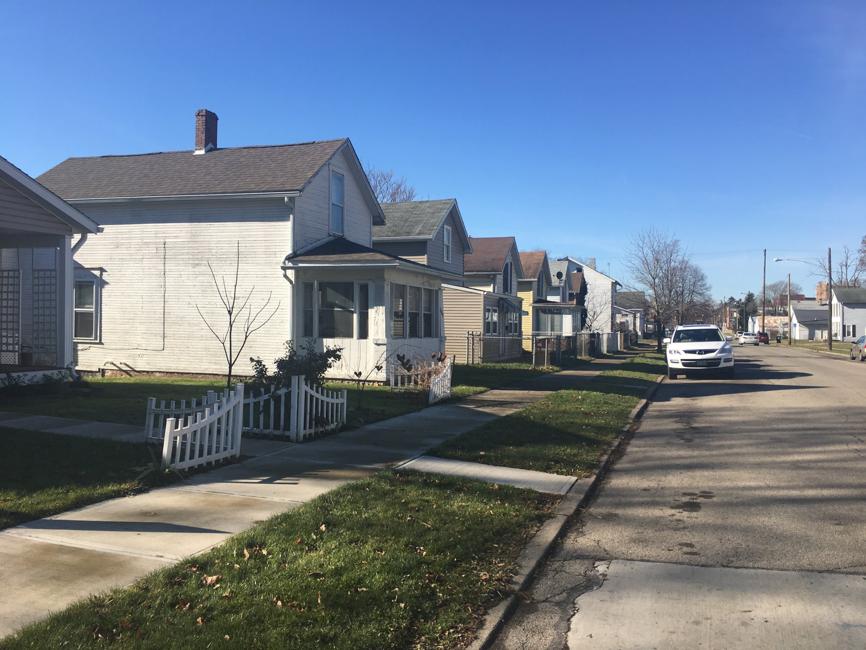
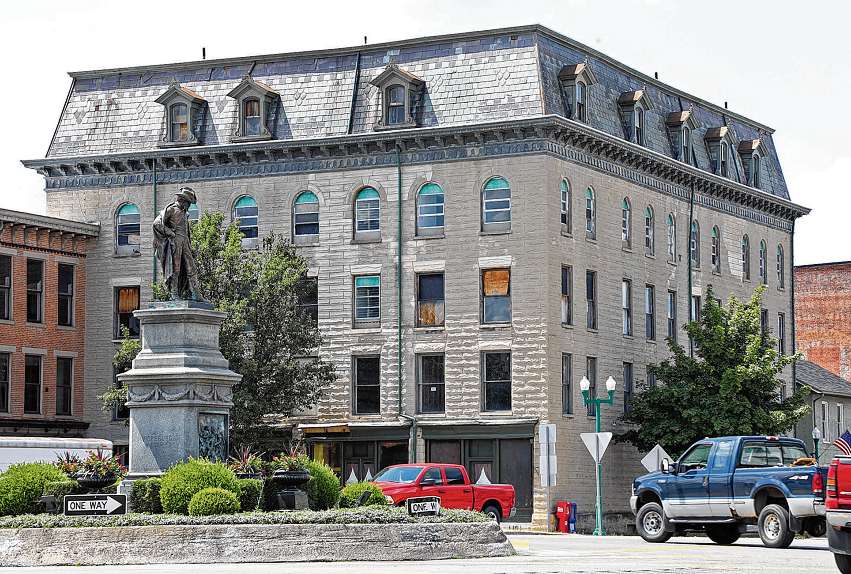
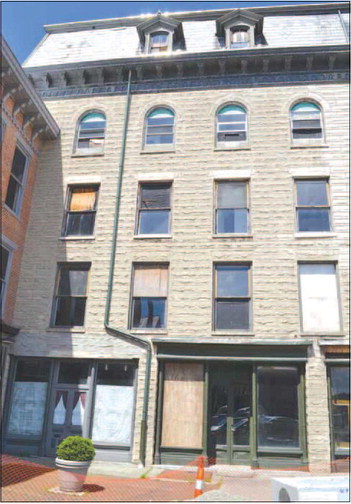
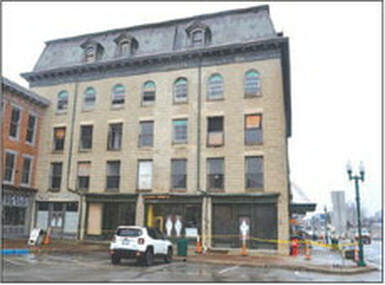
 RSS Feed
RSS Feed

